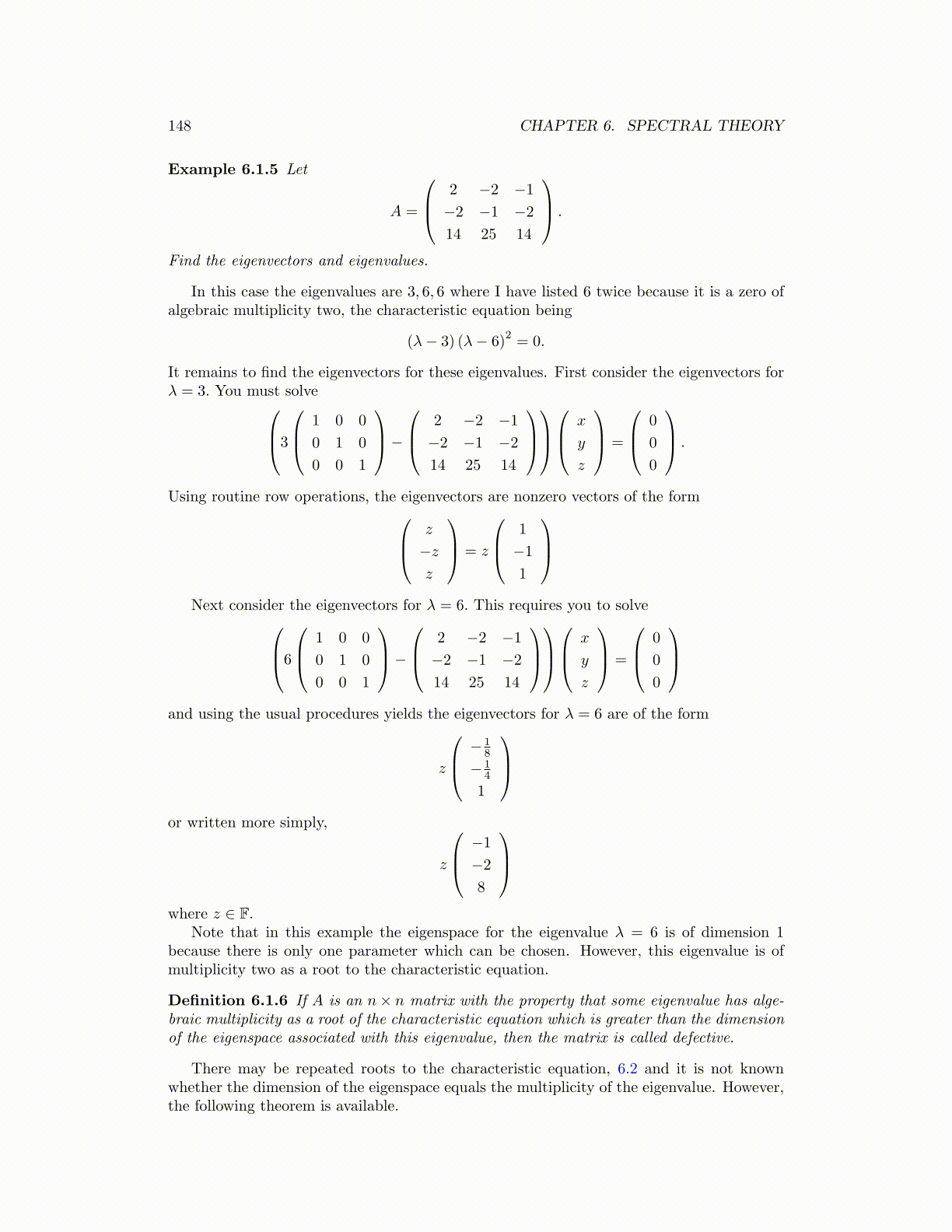
148 CHAPTER 6. SPECTRAL THEORY
Example 6.1.5 Let
A =
2 −2 −1
−2 −1 −2
14 25 14
.
Find the eigenvectors and eigenvalues.
In this case the eigenvalues are 3, 6, 6 where I have listed 6 twice because it is a zero ofalgebraic multiplicity two, the characteristic equation being
(λ− 3) (λ− 6)2= 0.
It remains to find the eigenvectors for these eigenvalues. First consider the eigenvectors forλ = 3. You must solve3
1 0 0
0 1 0
0 0 1
−
2 −2 −1
−2 −1 −2
14 25 14
x
y
z
=
0
0
0
.
Using routine row operations, the eigenvectors are nonzero vectors of the form z
−zz
= z
1
−1
1
Next consider the eigenvectors for λ = 6. This requires you to solve6
1 0 0
0 1 0
0 0 1
−
2 −2 −1
−2 −1 −2
14 25 14
x
y
z
=
0
0
0
and using the usual procedures yields the eigenvectors for λ = 6 are of the form
z
− 18
− 14
1
or written more simply,
z
−1
−2
8
where z ∈ F.
Note that in this example the eigenspace for the eigenvalue λ = 6 is of dimension 1because there is only one parameter which can be chosen. However, this eigenvalue is ofmultiplicity two as a root to the characteristic equation.
Definition 6.1.6 If A is an n× n matrix with the property that some eigenvalue has alge-braic multiplicity as a root of the characteristic equation which is greater than the dimensionof the eigenspace associated with this eigenvalue, then the matrix is called defective.
There may be repeated roots to the characteristic equation, 6.2 and it is not knownwhether the dimension of the eigenspace equals the multiplicity of the eigenvalue. However,the following theorem is available.